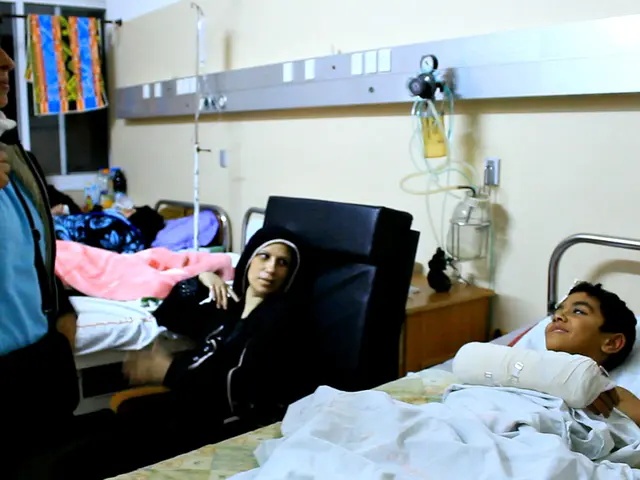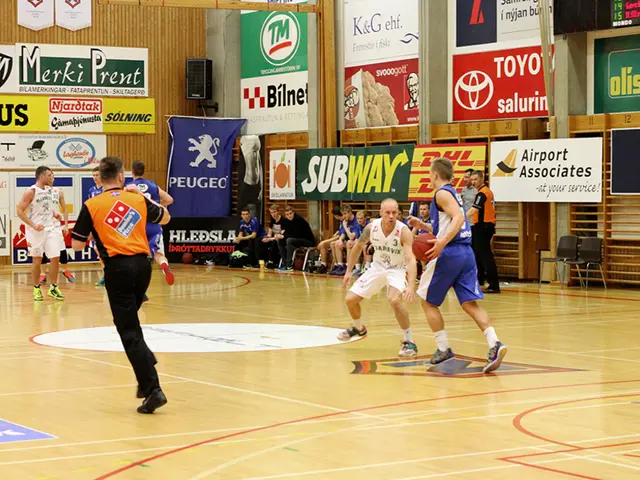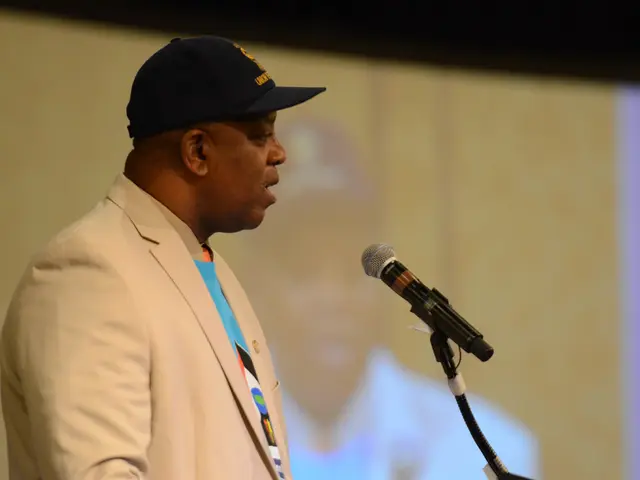Rescuing a Lifeless Man from a Raging High-Rise Inferno
- Person Extracted from Inferno in Tall residential Tower
Hey there! Let's talk about an intense situation that unfolded in Nuremberg recently.
In the wee hours of Saturday, an apartment on the sixth floor of a high-rise burst into flames. The smoke billowed into the stairwell, blocking any escape paths for residents. But, the grit and determination of the first responders turned the crisis around!
The brave firefighters were the first on the scene, battling the raging inferno with all their might. They managed to guide the trapped occupants, including a 67-year-old man who was found unresponsive in the stairwell, to safety. This critically injured man was later revived and transported to a hospital. Sadly, another resident suffered moderate injuries due to smoke inhalation. In total, ten people were slightly injured, as reported by the local police.
At first, the emergency services were bracing for a "mass casualty incident" (MCI). Over 100 first responders from various departments were on-site, with nearby hospitals put on high alert. The fire department mobilized nearly 100 firefighters to tackle the blaze.
Luckily, most residents were able to return to their apartments later that night. The apartment where the fire started and several others on the sixth floor were declared unfit for habitation. The entire ordeal caused roughly 500,000 euros worth of damage, with the cause of the fire still under investigation.
A Tale of Teamwork: The Emergency Services in Action
A MCI response in Nuremberg, much like in other major cities such as Mannheim, brings together various emergency services to ensure a coordinated and efficient response. While the exact roles may vary from one incident to another, the core teams involved are:
- Emergency Medical Services (EMS): They provide immediate medical care and transport patients to hospitals. Their expertise is crucial in triaging and prioritizing patients based on the severity of their injuries.
- Fire Department: Firefighters often assist in rescue efforts and provide additional medical aid when necessary.
- Police: They secure the scene, manage traffic, and maintain order. They investigate the cause of the incident and ensure public safety.
- Federal Police: In large-scale incidents, the federal police may provide specialized security support.
- Volunteer Emergency Services: Organizations like the German Red Cross, Malteser Hilfsdienst, and Johanniter-Unfall-Hilfe offer additional medical and logistical support.
During a MCI, these teams work together, utilizing tools like emergency alert systems to maintain clear and efficient communication. Their collective efforts keep the city's residents safe and help them overcome even the toughest challenges!
- The community policy in Nuremberg, specifically regarding emergency situations, must be commended for its role in coordinating the response of various services during the high-rise inferno.
- The employment policies of the fire department in Nuremberg clearly emphasize the importance of having a well-trained and motivated workforce, as shown by the bravery and quick thinking of the firefighters during the rescue operation.
- In situations like the Nuremberg high-rise inferno, it's evident that having a well-coordinated team of firefighters, emergency medical services, police, and volunteer emergency services is crucial, highlighting the significance of employment policies that foster effective teamwork and collaboration among these services.







